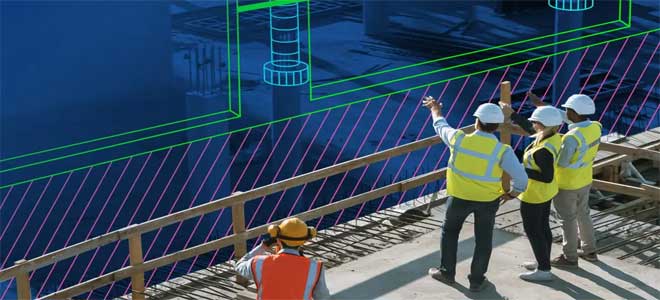Building Information Modeling (BIM) has transformed the way the architecture, engineering, and construction (AEC) industry operates, revolutionizing the design, construction, and management of buildings. In this digital era, programmers play a crucial role in implementing and customizing BIM software solutions to meet the specific needs of AEC firms.
Understanding BIM and Programming in the AEC Industry
This section provides a brief overview of BIM and its significance in the AEC industry. It explains how BIM combines 3D modelling, data management, and collaboration to create intelligent digital representations of buildings. It then delves into the role of programmers in leveraging programming languages, APIs, and software development skills to enhance and customize BIM workflows.
Customization and Automation of BIM Workflows
Programmers play a pivotal role in tailoring BIM software solutions to meet the specific requirements of AEC firms. They develop custom plugins, scripts, and applications that extend the functionalities of BIM software, enabling increased productivity and efficiency. This section explores the process of analyzing user needs, identifying automation opportunities, and developing customized solutions that streamline BIM workflows.
Integration of BIM with External Systems
BIM is often integrated with various external systems to exchange data and facilitate seamless collaboration. Programmers work on integrating BIM platforms with other software applications, such as cost estimating, scheduling, and facility management tools. This section discusses the challenges and considerations involved in data exchange, API integration, and interoperability between BIM and external systems.
Data Analysis and Visualization
BIM generates vast amounts of data throughout the lifecycle of a building project. Programmers with data analysis skills can leverage this data to derive valuable insights and provide visualizations that aid decision-making. This section explores the role of programmers in developing data analysis tools, dashboards, and visualizations that enable stakeholders to interpret complex BIM data and make informed decisions.
Collaborative BIM Workflows and Version Control
Collaboration is a fundamental aspect of BIM, and programmers contribute to establishing seamless workflows for multi-disciplinary teams. They develop tools and solutions that enable efficient collaboration, version control, and change management within BIM platforms. This section discusses the challenges involved in managing collaborative BIM projects and highlights the role of programmers in developing solutions that enhance teamwork and coordination.
Continuous Learning and Keeping Up with Technological Advances
The field of BIM and programming is rapidly evolving, with new technologies and tools being introduced regularly. Programmers working in the BIM domain must continuously upgrade their skills and stay abreast of the latest developments. This section emphasizes the importance of lifelong learning, exploring online resources, attending industry conferences, and participating in relevant forums to stay updated with the latest trends and advancements.
What is the scope of taking the role of a Programmer in the field of BIM?
The scope of taking on the role of a programmer in the field of BIM is vast and expanding. With the increasing adoption of BIM in the architecture, engineering, and construction (AEC) industry, the demand for skilled programmers who can enhance and customize BIM workflows is on the rise. Here are some key aspects that highlight the scope of the role:
1. Customization and Automation: Programmers have the opportunity to customize BIM software solutions to align with the specific needs and workflows of AEC firms. They can develop custom plugins, scripts, and applications that extend the capabilities of BIM software, resulting in increased productivity, efficiency, and streamlined processes.
2. Integration with External Systems: BIM often needs to be integrated with other software applications such as cost estimating, scheduling, and facility management tools. Programmers can work on developing integrations, APIs, and data exchange mechanisms to ensure seamless collaboration and data interoperability between BIM and other systems.
3. Data Analysis and Visualization: BIM generates vast amounts of data throughout the lifecycle of a project. Programmers skilled in data analysis can leverage this data to derive valuable insights, perform simulations, and create visualizations that aid decision-making. They can develop tools and dashboards that enable stakeholders to interpret complex BIM data and make informed choices.
4. Collaboration and Version Control: Collaborative workflows are integral to BIM projects, and programmers can contribute to establishing efficient collaboration processes within BIM platforms. They can develop tools and solutions that enable version control, change management, and real-time collaboration among multidisciplinary teams, ensuring smooth project coordination.
5. Emerging Technologies and Innovations: The field of BIM is constantly evolving, and programmers have the opportunity to explore and incorporate emerging technologies into their work. This includes advancements in areas like artificial intelligence, machine learning, virtual reality, and augmented reality. By staying updated and adapting to new trends, programmers can bring innovative solutions to the field of BIM.
6. Career Growth and Opportunities: Taking on the role of a programmer in the field of BIM can offer excellent career growth opportunities. Skilled programmers who specialize in BIM can become sought-after professionals in the AEC industry. They can work as consultants, software developers, BIM managers, or even start their own BIM consulting firms, providing services to a wide range of clients and projects.
The Future of Programming in BIM
As BIM continues to evolve, the role of programmers will become increasingly critical. This section discusses the potential future trends, such as artificial intelligence, machine learning, and virtual reality, and their impact on programming in the BIM field. It also highlights the need for programmers to adapt and embrace emerging technologies to meet the evolving needs of the AEC industry.
Conclusion
Programmers play a vital role in the implementation and customization of BIM software solutions in the AEC industry. Their expertise in programming languages, data analysis, and software development enables them to enhance BIM workflows, automate processes, integrate with external systems, and facilitate collaborative environments. As technology advances and new trends emerge, programmers will continue to be at the forefront, driving innovation and shaping the future of BIM in the AEC industry.

